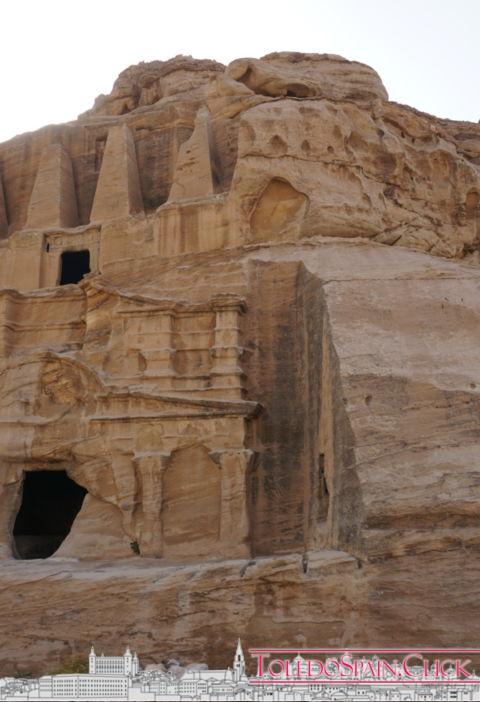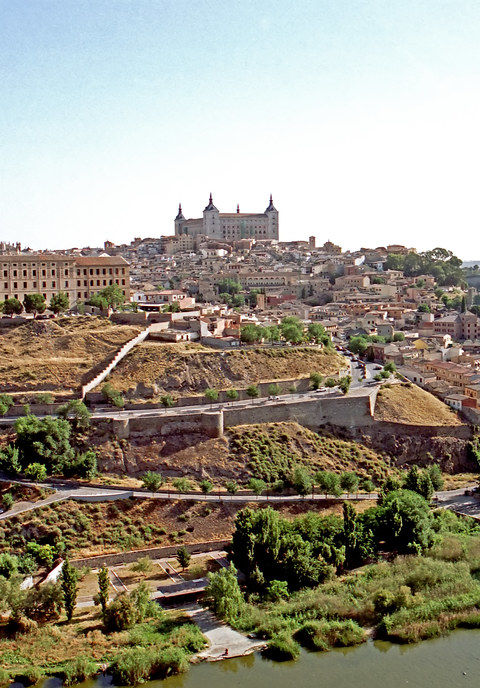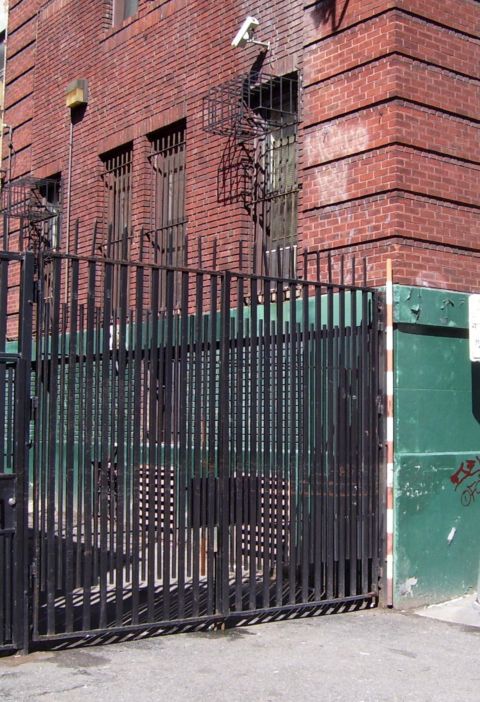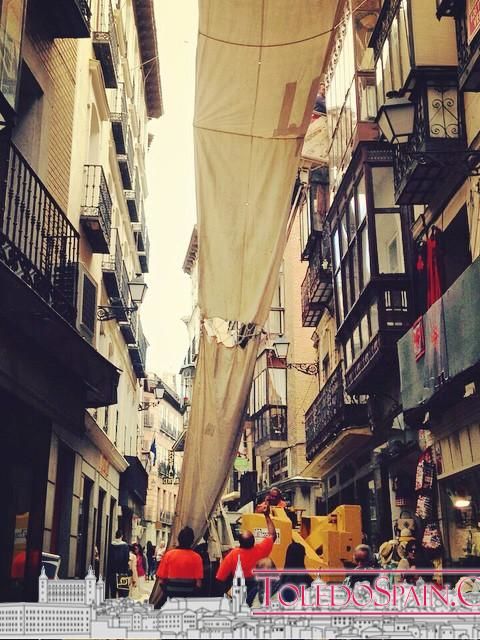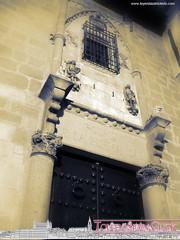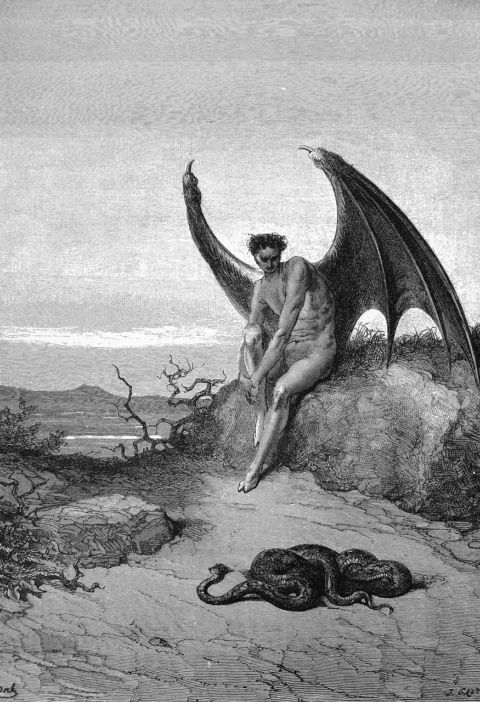4.4 05
Many are those who have ventured to give an explanation to this “legend”, or Toledan tradition. From researchers to historians, including many residents of Toledo, everyone has their own opinion of when, where or what the “Caves of Hercules” were (or are)… This restored space is reopened for everyone’s enjoyment.
The Cave of Hercules in Toledo
The “Caves of Hercules” surrounded by mysteries and legends, summarize in a certain way the “underground” tradition of Toledo. Tradition says that this place was carved by Tubal or Hercules the Egyptian and would be the secret chair from which Hercules himself taught the occult sciences. It was said that in those caves there were figures or paintings hidden before the arrival of the Arabs, whose unveiling would bring great evils. In these caves is also located the treasure found by the young Jew of the manuscript of Roso de Luna, just to give some examples.
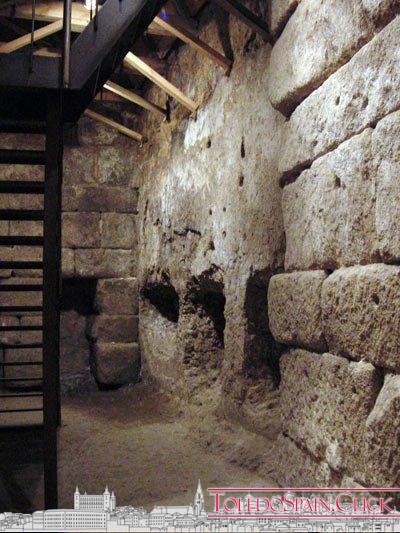
Status of the “cave” before the 2009 restoration. Photo credits: www.ToledoSpain.click
The caves were under the church of San Ginés, which has now disappeared. In addition there are other subterranean in the surroundings, like those of the house Navarro Ledesma, 1, and those of Hacienda. It could well be that all these subways were Ibero-Roman refuges, constituting a kind of refuge city communicated by passageways. The tradition of hidden paintings could refer to the fact that the caves were used as a pagan temple in which pagan statues continued to receive secret worship after Christianity became official in Toledo; the statues were hidden to protect them from the iconoclastic wave that Christianity surely sponsored, as hardly any Roman statues have been found in the city. Later, they could have been used as a refuge by the Christians persecuted by the Arabs and, later, by the Arabs and Jews persecuted by the Christians. The latest excavations have finally shown that these caves really formed part of the cisterns of the Roman supply of Toledo, as we can see in the photograph attached to this text.
In addition to the hermetic tradition of Hercules and the hidden treasures (read: The Enchanted Palace of Toledo), this cave has another important tradition linked to it, referring to the last Gothic king, Don Rodrigo, and the fall of Spain into Arab hands (La Cava). These caves were the mysterious enclosure whose entrance was forbidden to mortals and whose unveiling would bring great evils. King Rodrigo dares to enter and with it drags his country to ruin, which will be invaded by the Arabs. This tradition is taken up by a character as picturesque and foreign to Toledo as the Marquis de Sade. In his Crimes of Love he collects an allegorical tale entitled “Rodrigo o la torre encantada” (Rodrigo or the Enchanted Tower), in which the divine Marquis gives his free and fantasized version, but very beautiful:
” While the danger increases, the unfortunate monarch is on the eve of being thrown from the throne; he then remembers an ancient monument around Toledo, which they call the Enchanted Tower; vulgar opinion believes it to be full of treasures; the prince runs to it for the purpose of apprehending them; but it is not possible to enter the dark redoubt. An iron door with a thousand locks impedes his passage so well that no mortal has yet been able to penetrate it. At the top of this terrible door it reads in Greek characters: Do not approach if you fear death. Rodrigo is not frightened by this: it is about his States, all hope of finding funds is absolutely lost: he orders the doors to be broken and moves on.
The King, after crossing several rooms with the most horrendous and Dantesque visions, will penetrate into the very infernos, where he will have to continue his search for inflamed lakes and rivers of fire, bloody volcanoes, icy plains populated with giants… until finally obtaining the desired treasure. But the Arabs are already invading his entire kingdom and a warrior knocks him down, who turns out to be “Florinda la Cava”.
Surely you are also interested: Patios of Toledo in Corpus Christi 2016 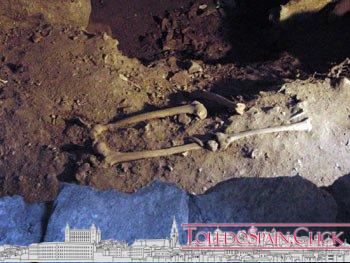 Human Remains in the Church of San Ginés (Cueva de Hércules)
Human Remains in the Church of San Ginés (Cueva de Hércules)
So strong was the belief, at the end of the Middle Ages, in the infernal things that happened in the Toledan subways and the monsters that inhabited them, that Cardinal Silicon ordered a reconnaissance in the Caves of Hercules in 1546. The explorers penetrated with torches in the subways of San Ginés; but they appeared emaciated and telling such terrible stories that the strange cave was covered; this event was registered in the annals of Toledo. It was not until 1839 that another reconnaissance of the cave was attempted, following the demolition of the church of San Ginés. The viscount of Palazuelos says in his “Guide”, written in 1890:
” Once on the site, we saw on the ground, on the left, a square gap, entrance to the cave, an enclosure almost full of debris that does not prevent, however, the entry, nor take charge of what is described. Formed by vaults of parallel and semicircular stones of unquestionable Roman manufacture, joined by practically closed arches. At the ends of the room there are certain gaps or walled up doors that, without a doubt, communicate with some immediate vault.”.
At present, it is possible to descend to this cave thanks to the work carried out by the team of archaeologists of the City of Toledo Consortium and the City Council. There you will be able to observe the drilling attempts that were made during these “visits” to discover how far the supposed cave had reached. In January 2010 the cave has been reopened, with a new restoration for the enjoyment of Toledo and tourists.
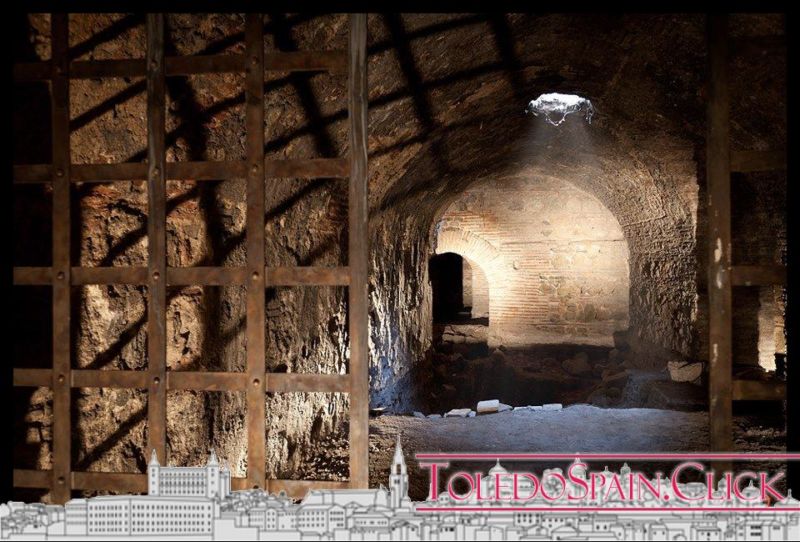 Cave of the Greco Museum in Toledo..
Cave of the Greco Museum in Toledo..
There are other famous basements or subways in Toledo. Los de la Casa del Greco, for example. The house of El Greco was built last century in what were the houses of Samuel-ha-Levi, the Jewish treasurer of Don Pedro el Cruel. It was said that Samuel hid infinite riches in those basements and the king asked him to give them to him. As the Jew refused, the king threw him in jail and subjected him to terrible torments:
” If Don Samuel gave me the third part of the smallest heap here, I would not command him to torment. “E dexose die without telling me!”
The cruel Don Pedro exclaims when he seizes the 170,000 doubles, 4,000 silver marks, 125 arks full of gold and silk cloths and many jewels hidden in those subterranean…
Later, the house was handed over by Enrique IV to Don Juan Pacheco, Marquis of Villena (see legend), and it began to be known as “Villena’s house or palace”. It was said that Don Enrique de Aragón, improperly called Marquis of Villena, lived there, and that he used those subways for his witchcraft and necromances, seeing at the edge of the midnight yellowish glows that arose from the subways, at the same time that chains and clashes of crystals and redomas were heard, although the truth is that if there had been something, the thing would not pass from simple experiments of alchemy. Then the palace was ruined and the subways were a shelter for beggars, until the house was built and the El Greco museum was created.
The subways are very wide, in ramp, and with seven floors, it was said, although in reality they do not have more than three floors. There are two groups: some that could have been stables and those that are entered through the hallway and others that are entered through the garden and are the deepest. The tourist can see a small part through the fences. Recently, an underground passageway has been discovered that connects them with the neighbouring Transit synagogue. There are other houses on the Tránsito promenade whose basements have galleries that descend towards the river.
Basements similar to those of the house of El Greco are those of the convent of San Clemente. They were built with rough half barrel vaults and very wide. They must have served as a storehouse for the incomes collected by the convent in kind. Also very important are the basements of the Alcázar, but these require separate mention. Their current structure dates from the Renaissance; but they certainly must have existed before. They served as stables and stables and were accessed through the Alcázar slope, through the Carros gate. These basements were visited until not many years ago by the tourist evoking the hard battle fought there during the Civil War, and in the room of the cisterns, for example, you can see the various floors.
The basements of the palace of Fuensalida were also stables and cavalry lodgings, today ready to accommodate tourists converted into cafeteria. In general, and with the boom in tourism, the basements are cleared of cobwebs, vampire bats, goblins, monsters or hidden treasures and appear overnight converted into cafeterias, discos, inns, art galleries, etc. That destination has followed basements that once instilled fear and that are now places of fun in the alley of the Sillería, Zocodover… But there are still many others in Toledo, such as the house of the Rojas, Schools Núñez de Arce, San Miguel el Alto… And who knows if with great treasures.
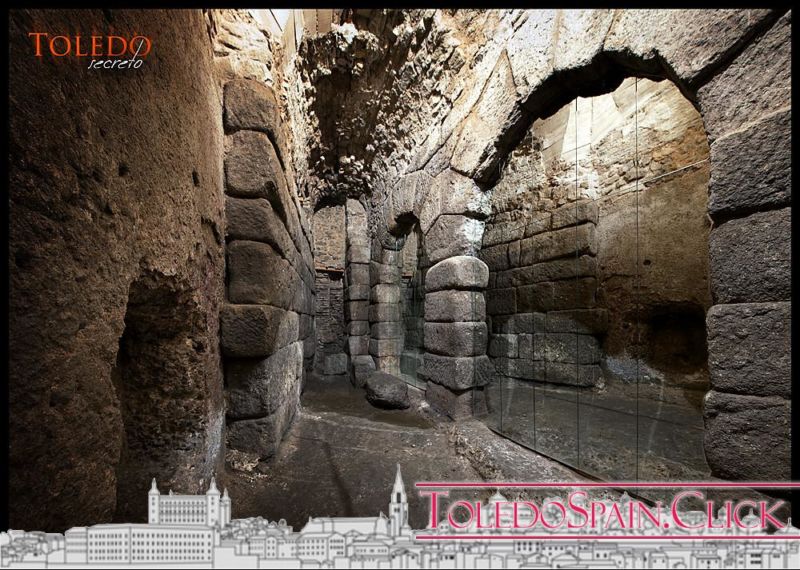 Cave of Hercules, at present. Toledo Secreto.
Cave of Hercules, at present. Toledo Secreto.
Exploring the “Caves of Higares”
Some authors affirm that these caves arrived “several leagues outside Toledo”, reaching the place known as Cuevas de Olihuelas, in the Higares estate, in the municipality of Mocejón. Here is a video about this curious space:
Location in Toledo:
View larger map
Find out more:
– Hercules Cave Reopening (ABC)

